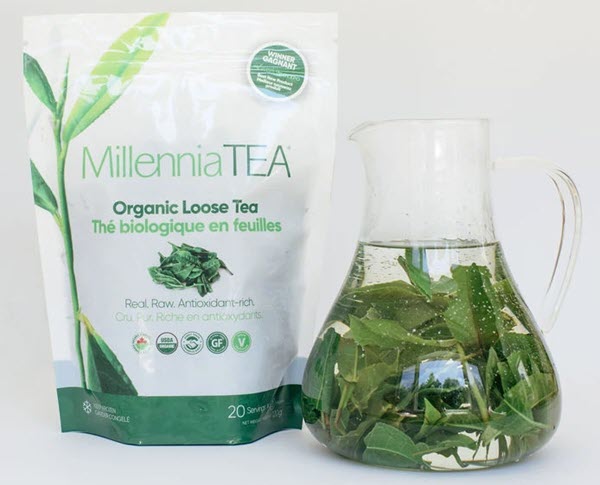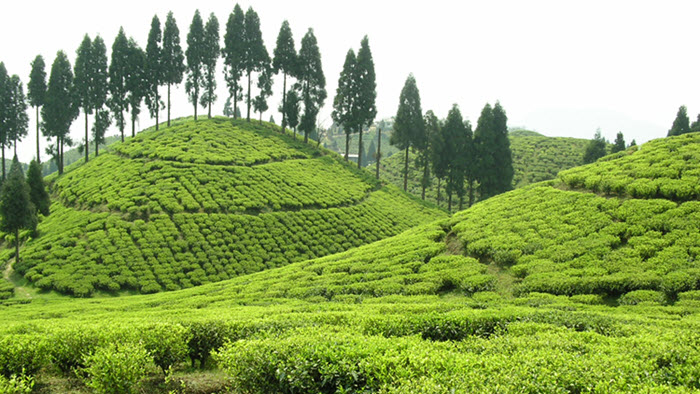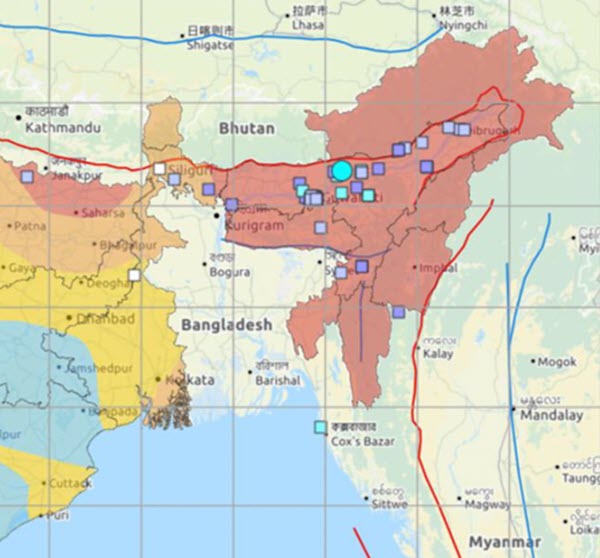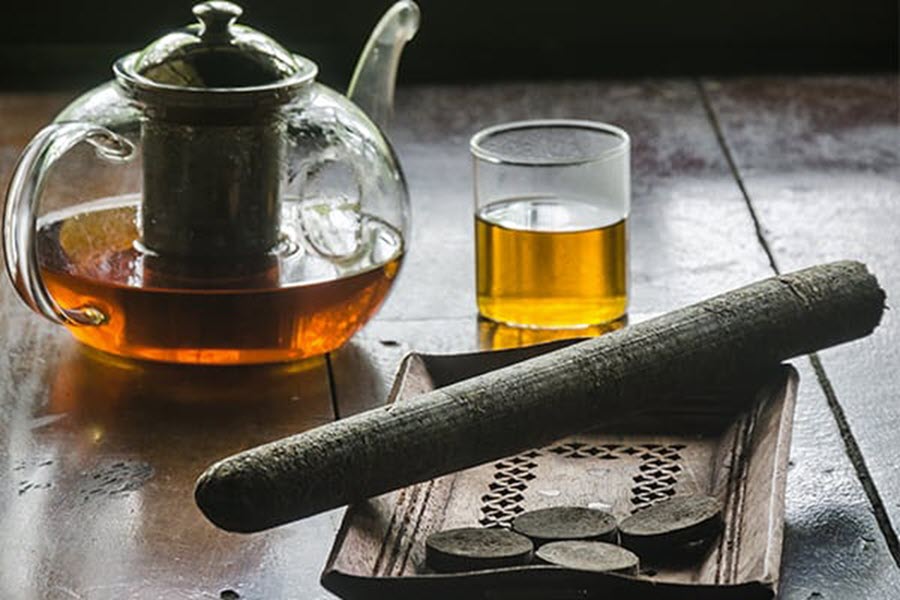Kenya is investing millions in its tea sector to generate jobs and boost foreign exchange earnings. Shortly after taking office, President William Ruto directed the Ministry of Trade to increase exports of value-added tea from 5% to 50% during the next five years. In October, he announced funding for a public-private processing and packaging facility in Mombasa and approved $6 million to increase orthodox production at 10 Kenya Tea Development Agency (KTDA) factories. Kenya Tea Board CEO Peris Mudida writes, “Tea plays a key role in the socioeconomic development of our country. However, the tea industry’s full potential in Kenya has not been fully optimized due to low-value addition and product diversification levels.” The Ruto administration intends to achieve that potential.
Listen to the Interview

Kenya’s New Tea Board is Energized and Able
By Dan Bolton
Founded in 1950 as an independent, public body responsible for developing, promoting, and regulating Kenya’s tea industry, in 2014, the Kenya Tea Board was dissolved in favor of a single Agricultural and Food Authority (AFA) housed within the Ministry of Agriculture.
Peris Mudida, trained in the law, was named head of the AFA’s tea directorate in 2020 after serving six years as the ministry of agriculture’s tea regulation legal services manager.
In 2021 the newly constituted Tea Board seated elected representatives of smallholder cooperatives and associations, factory operators, large producers, tea traders, and the Kenya Tea Development Agency – a private consortium representing tea farms and factories responsible for producing 60% of the country’s tea. As CEO, Peris works closely with the Ministry of Agriculture and the Ministry of Trade and is the official promoter of Kenya’s tea industry worldwide. She spoke to Tea Biz during the North American Tea Conference in September.
Dan Bolton: Will you tell listeners a little about the history of the tea board and your thoughts on its reinstatement as Kenya’s tea industry promoter and regulator?
Peris Mudida: The Tea Board of Kenya (TBK) is mandated by the government of Kenya to provide oversight over the tea sub-sector. TBK is a new institution that came into operation in 2021 after the government made a policy change and brought back the Tea Board of Kenya, which existed previously up to around 2013.
At that point, a decision was made by the government to consolidate regulatory institutions and the crops sub-sector in Kenya. And so the tea board was converted into the Agriculture and Food Authority. However, after about seven or eight years, a decision was made to reverse that and to re-establish the Tea Board of Kenya. So, the board of Kenya is a state corporation established under the Tea Act, passed in the year 2020. Broadly, the mandate is to regulate, develop and promote the tea sub-sector in Kenya.
Building resilient communities is one of the first principles, and to address on-the-ground challenges with these experts and partnerships that already exist but are looking for more support from corporate partners like us.
Dan: Will you share your vision for the tea board?
Peris: Yes. The tea board of Kenya has a very broad mandate under the Tea Act to develop the sector, promote the tea sub-sector, and regulate the tea sub-sector. Kenya exports most of what it produces. Kenya is the third-largest producer of tea in the world and the leading exporter in the world.
We want to ensure that the tea that we supply is produced in a sustainable manner and that it gets the returns that we desire. This is especially true for the producers, the farmers who toil on the farms but are unable to make a living. Tea is also important because of the foreign exchange that it adds to our country. So, we are looking at having an industry that meets the farmers’ expectations and the other value chain players in the tea industry, including buyers and tea corporations. We have other people who are involved in the value chain; they pack the tea and sell it. So, we are looking at having everybody get a fair return for whatever they do along the tea value chain.
Dan: Our listeners share your love of tea, and they live in every corner of the globe, including all 73 tea-producing countries. What message would you like to leave them?
Peris: My message to the tea consumers is that tea is good. So we want you to take more and more tea and not only more tea but more Kenyan tea. Kenyan tea is good tea, as you well know. It is produced in the highlands of Kenya, where the tea is grown in a natural environment. There is no application of any sort of pesticide. And so you can be sure as you take your tea that it is good for your health, and as you consume that tea, we’d also like to ask you to remember that producers of that tea also need a fair return so that as you buy the tea, that you also pay a fair price for the tea.
See: Ketepa Tea Packers | Kenya Tea Development Agency
The goal is to “enable tea consumers globally to distinguish Kenya tea brands and associate Kenya tea products for their quality and authenticity.”
– Peris Mudida




Kenya Expands its Orthodox Tea Capability
Kenya is the third largest tea-producing country by volume, but most of its output is commodity-grade black tea. In 2021 volume reached 537 million kilos. Only a tenth of that total is orthodox processed whole and broken-leaf tea.
Exports totaled 558,925 million kilos last year. In 2021 tea exports topped $1.36 billion (Ksh135 billion), which was 22% of Kenya’s foreign exchange earnings. The main export markets are Pakistan, Egypt, the United Kingdom, Sudan, and the UAE. Exports to the US are on the rise at 3,535 metric tons. Canada imported 1,086 metric tons of Kenyan tea in 2021.
Tea exports account for 92% of total tea production. Domestic tea drinkers consume the remaining 8%.

Seventeen factories are licensed to produce orthodox and specialty tea. Approximately 31.3 million kilos are grown west of the Great Rift Valley, and 15 million kilos are grown east of the rift (mainly by smallholders).
In October, President William Ruto announced that the government would construct a modern common-use facility in Dongo Kundu to process and package tea. The public-private venture will add value to commodity offerings and expand the availability of orthodox black tea.
Simultaneously the Kenya Tea Development Agency (KTDA) asked the government for Ksh800 million ($6 million) to expand production lines at 10 of its 12 orthodox tea factories. KTDA currently produces five million kilos of high-value specialty tea. White teas, for example, bring as much as Ksh7000 ($58) per kilogram. Purple teas are auctioned for Ksh2400 ($20) per kilo compared to CTC (crush, tear, curl) teas that sell for Ksh270 ($2.25) per kilo.
Kenya sees opportunities in two markets. First, Africa’s new free agreement encourages neighboring countries to purchase packaged teas for domestic consumption. Kenya recently sent a large shipment of its Ketepa Pride national brand to Ghana, a first under the African Free Trade Continental Area (AfCFTA) pact. Kenya named Morocco, Mauritius, and Tunisia as potential trade partners.
Expanding orthodox production also enables Kenya to compete better with Sri Lanka, which has seen a 20% decline in the output of premium Ceylon teas. Sri Lanka black teas sell for more than double the price of bulk black teas from Kenya. To accelerate production, KTDA increased subsidies reducing the cost of fertilizer from Ksh6,000 to Ksh3,500 with a target of between Ksh2,500 and Ksh300 per metric ton.
Mudida says the Tea Board of Kenya is collaborating with state and non-state actors to develop and promote a strong Kenya tea brand. The goal is to “enable tea consumers globally to distinguish Kenya tea brands and associate Kenya tea products for their quality and authenticity,” she said.
Kenya is not abandoning bulk production, writes Mudida. “We wish to clarify that it is government policy to upscale tea value addition progressively to enhance tea growers’ earnings. The government has not banned the sale of tea in bulk,” she said.
Mudida anticipates a solid return on investment.
“We project that through these incentives, Kenya’s tea industry could generate about 80,000 new jobs and increase annual industry returns substantially,” she said.

Expanding the Brand: Tea Masters Cup
The Tea Masters Cup (TMC), an international tournament for tea makers, announced the Tea Board of Kenya (TBK) will coordinate the country’s tea industry competitions to ensure smooth integration of the local tournaments into the international TMC competitions.
Kenya is the first African country to join TMC.
In a joint press statement, TBK CEO Peris Mudida and TMC Chairman Ramaz Chanturiya said the competitions are an important strategy to promote the tea profession, trade, consumption, and collaboration with relevant stakeholders both nationally and globally.
TMC and TBK announced the partnership and launch of the competition during the International Tea Day Celebrations in May in Kericho.
Chanturiya called the agreement an important milestone as TMC Kenya competitions will bring together thousands of experienced, creative, professional, and passionate tea makers of different tea cultures into a single authentic international competition system.
The country looks forward to showcasing her finest premium teas and finest tea masters and look forward to TMC supporting Kenya adopt innovative approaches to global tea collaboration, enhanced tea quality, and trade,” write Mudida and Chanturiya.
TMC was founded in 2013 and involves people engaged in tasting, preparing, and serving tea and tea drinks by professionals and amateurs in four different categories: tea preparation, tea pairing, tea mixology, and tea tasting.
During the past decade, TBK has organized the Tea Recipe Competition to create awareness and boost tea consumption locally, with a progressive increase in tea consumption by locals witnessed from 2011 to 2021.
“Tea Recipe Competition attracted Kenyans from all walks of life and resulted in a boost of local tea consumption from 20 million kilograms in 2011 to 38 million kilograms in 2021,” according to the joint release.
Link to share this post with your colleagues
Signup and receive Tea Biz weekly in your inbox.

























